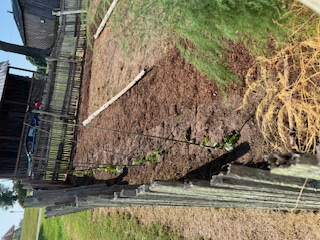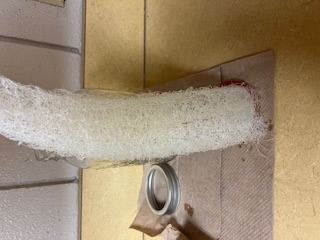Growing & Harvesting Luffa
go.ncsu.edu/readext?1033403
en Español / em Português
El inglés es el idioma de control de esta página. En la medida en que haya algún conflicto entre la traducción al inglés y la traducción, el inglés prevalece.
Al hacer clic en el enlace de traducción se activa un servicio de traducción gratuito para convertir la página al español. Al igual que con cualquier traducción por Internet, la conversión no es sensible al contexto y puede que no traduzca el texto en su significado original. NC State Extension no garantiza la exactitud del texto traducido. Por favor, tenga en cuenta que algunas aplicaciones y/o servicios pueden no funcionar como se espera cuando se traducen.
Português
Inglês é o idioma de controle desta página. Na medida que haja algum conflito entre o texto original em Inglês e a tradução, o Inglês prevalece.
Ao clicar no link de tradução, um serviço gratuito de tradução será ativado para converter a página para o Português. Como em qualquer tradução pela internet, a conversão não é sensivel ao contexto e pode não ocorrer a tradução para o significado orginal. O serviço de Extensão da Carolina do Norte (NC State Extension) não garante a exatidão do texto traduzido. Por favor, observe que algumas funções ou serviços podem não funcionar como esperado após a tradução.
English
English is the controlling language of this page. To the extent there is any conflict between the English text and the translation, English controls.
Clicking on the translation link activates a free translation service to convert the page to Spanish. As with any Internet translation, the conversion is not context-sensitive and may not translate the text to its original meaning. NC State Extension does not guarantee the accuracy of the translated text. Please note that some applications and/or services may not function as expected when translated.
Collapse ▲Luffa
Luffa is a unique vining plant that produces a multipurpose fruit that can be utilized for sponges or as an edible when not allowed to mature (no more than 6 inches long). They are a part of the Cucurbit family and grow similar to cucumbers. Luffa needs a long season to reach maturity, taking around 120 days to develop fruit to be harvested for sponges.

Planting
Luffa can be sown directly after the last frost, or it can be grown 4-6 weeks prior to the last frost and transplanted once your area is free of the risk of frost. Seeds should be planted at a depth between 1/2″ to 1″. Space transplants 3′ apart, thin seedlings to achieve the same 3′ spacing, leave 6′ between rows.

Care
Fertilize based on soil test recommendations, a balanced fertilizer is recommended in situations where a soil test has not been taken. Luffa will grow under diverse soil conditions but a pH between 6.0 and 7.0 is preferred. Water luffa at the base of the plant, consistent and deep watering during dry periods is necessary. Water needs may increase during fruiting. As plants begin to show early signs of drought stress like wilted or drooping leaves. Consider mulching or trellising plants to help prevent fruit rot.

Harvesting
Mature green or brown (dried) luffa can be harvested and processed for sponges. Pick green luffa once the exterior has separated from the fibrous interior, you can check your luffa for this with a few gentle squeezes. Peel your luffa, clean out seeds and pulp with water. (this takes time). For dried luffa you can peel the luffa and shake seeds out of the sponge. It may help with seed removal to cut the ends of the sponge. It has been found that soaking luffa in a 10% bleach solution for 30-60 minutes promotes strength and whiteness. Allow the luffa to air dry indoors or outdoors in the sun. Gaston County has a quick YouTube short on processing mature green luffa from our heritage garden. Make sure to save mature seeds for replanting, seeds that are mature will typically be dark in color.





